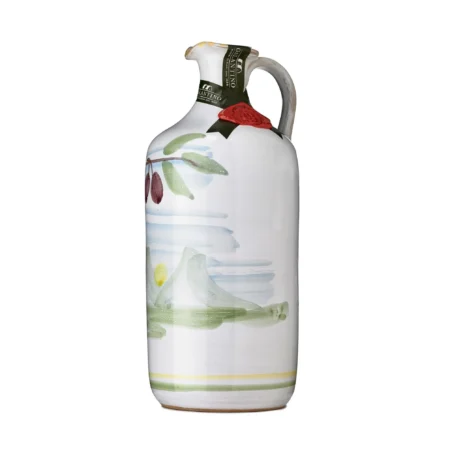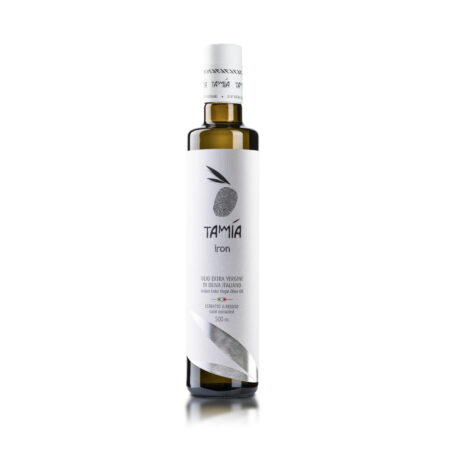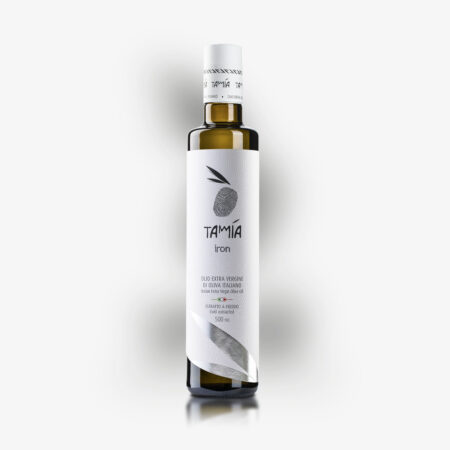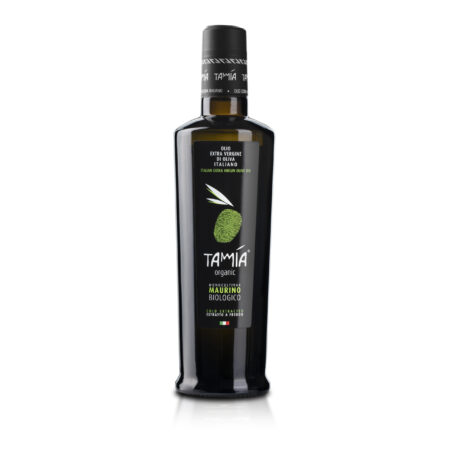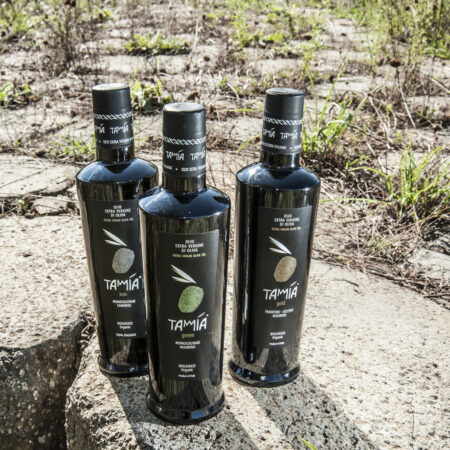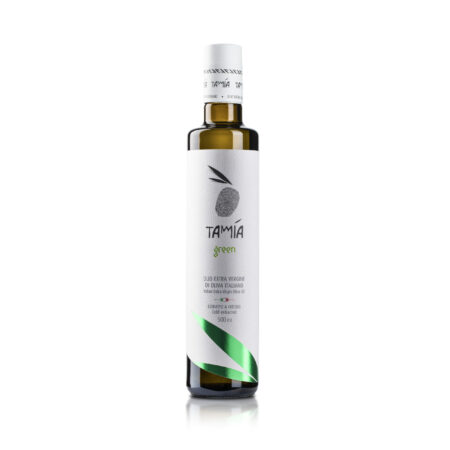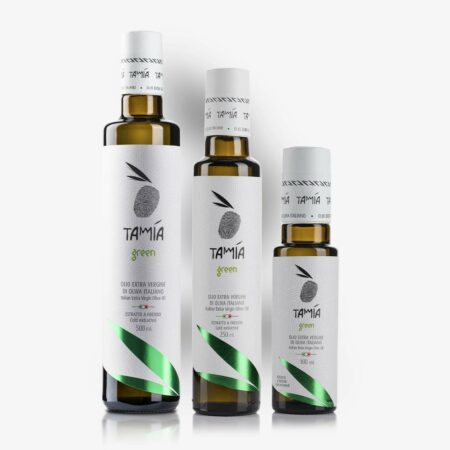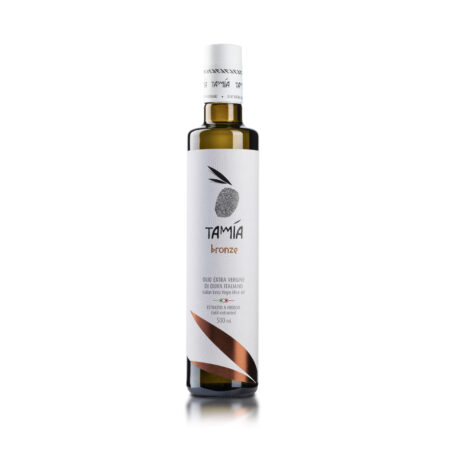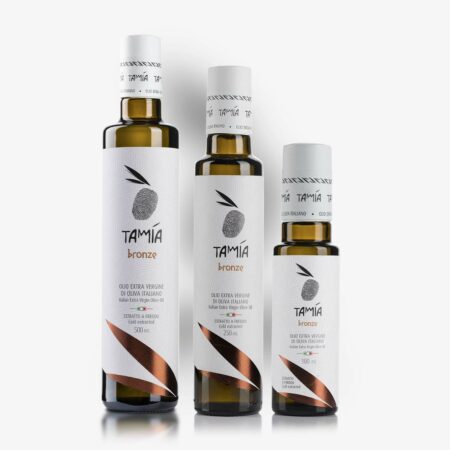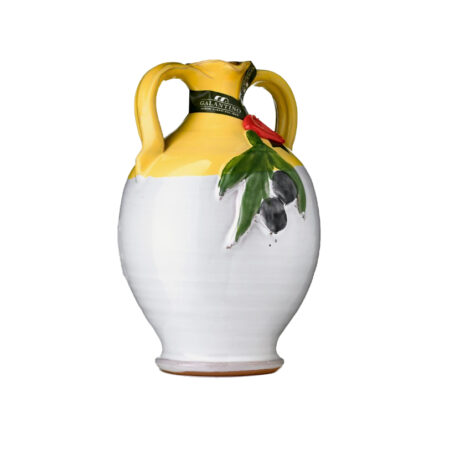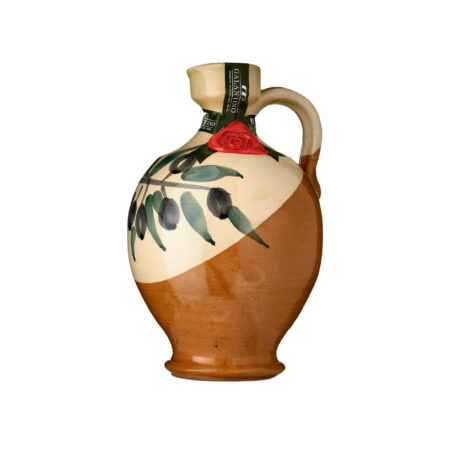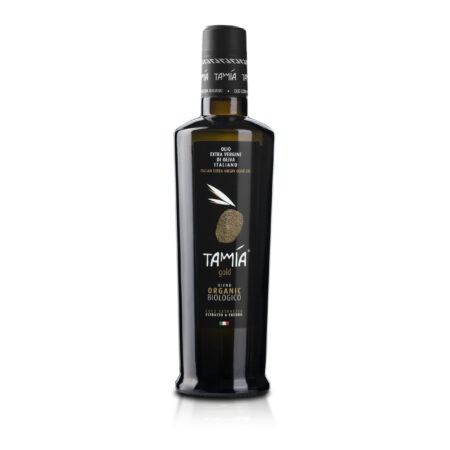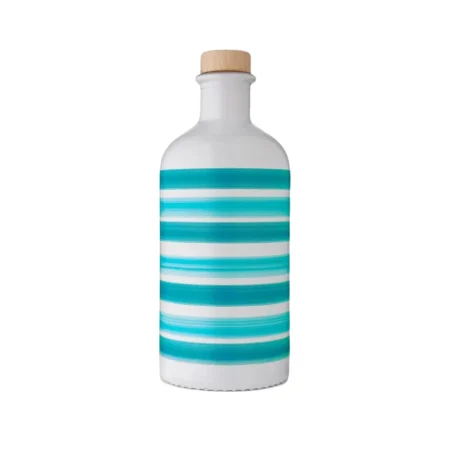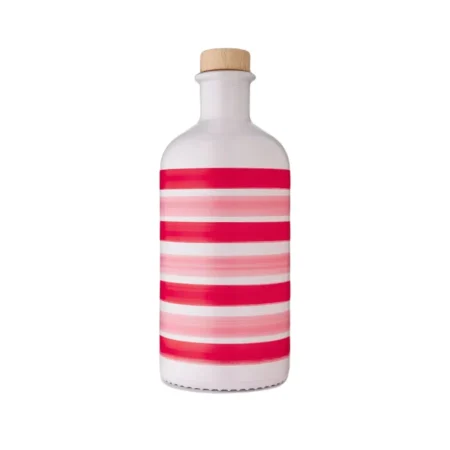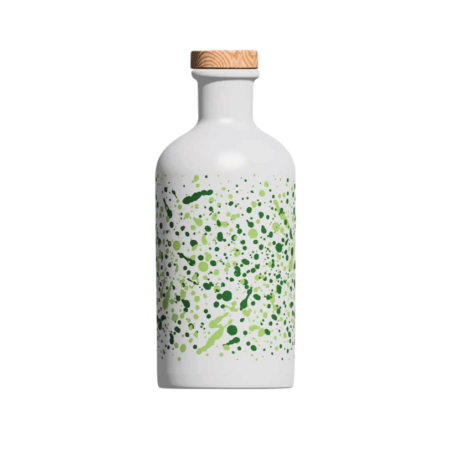Olivenöl zum Braten ist eine speziell ausgewählte Kategorie von Ölen, die sich durch einen höheren Rauchpunkt auszeichnen, was sie ideal für das Kochen bei hohen Temperaturen macht. Sie unterscheiden sich von traditionellem extra nativem Olivenöl, das hauptsächlich für Salate empfohlen wird oder als Zusatz zu fertigen Gerichten. Zum Braten bestimmte Olivenöle sind oft raffiniert, was ihren Einsatz in der Küche für die Zubereitung verschiedener Gerichte ohne das Risiko übermäßigen Rauchens und Verlusts von Nährstoffen ermöglicht. Diese Eigenschaft macht sie zu einer ausgezeichneten Wahl für Menschen, die gesundes Kochen mit intensiverem Braten, wie das Zubereiten von Fleisch, Fisch oder Gemüse, verbinden möchten. Dank ihrer thermischen Stabilität bewahren Olivenöle zum Braten ihre gesundheitlichen Vorteile, wie den Reichtum an einfach ungesättigten Fettsäuren und Antioxidantien, und minimieren gleichzeitig das Risiko der Bildung schädlicher Verbindungen während des Kochprozesses. Ideal für Liebhaber der gesunden Küche, die nicht auf die Verwendung von Olivenöl im täglichen Kochen verzichten möchten.
Ergebnisse 1 – 12 von 52 werden angezeigt
-
Nativem Olivenöl Extra – Keramikflasche BIO
Ursprünglicher Preis war: 39,90 €29,90 €Aktueller Preis ist: 29,90 €. In den Warenkorb -
Nativem Olivenöl Extra – Keramikflasche Cincinnati
Ursprünglicher Preis war: 39,90 €29,90 €Aktueller Preis ist: 29,90 €. In den Warenkorb -
Nativem Olivenöl Extra – Keramikflasche Robin
Ursprünglicher Preis war: 39,90 €29,90 €Aktueller Preis ist: 29,90 €. In den Warenkorb -
Olivenöl Tamia Gold Biologico 500 ml
Ursprünglicher Preis war: 43,90 €38,90 €Aktueller Preis ist: 38,90 €. In den Warenkorb
Kann man mit Olivenöl braten?
Frying with olive oil is possible and commonly practiced, especially in Mediterranean cuisine. However, it requires choosing the right type of oil and being aware of its properties. Extra virgin olive oil, although popular for its rich flavor and numerous health benefits, has a relatively low smoke point compared to other fats, which means it starts to break down and smoke at lower temperatures. Therefore, while it is ideal for salads, dressings, or gentle cooking, it may not be the best for high-temperature frying, such as deep frying.
Nevertheless, frying with olive oil is possible and safe if used properly and under the right conditions. Refined olive oil has a higher smoke point than extra virgin olive oil, making it more suitable for frying at medium to high heat. Using refined olive oil allows for the health benefits of olive oil to be utilized in frying without the risk of releasing harmful substances that can arise from overheating extra virgin olive oil.
Additionally, frying with olive oil, even at moderately high temperatures, can contribute to adding a characteristic, slightly fruity flavor typical of olive oil. This is particularly desirable in dishes where the flavor of the oil can enhance the overall flavor palette of the dish, such as frying fish, vegetables, or preparing sauces.
What is a smoke point?
The smoke point is the temperature at which fat or oil begins to break down and emit smoke, signaling the chemical degradation of the product. This point is an important indicator that determines whether a particular fat is suitable for frying, baking, or cooking at high heat. Exceeding the smoke point can lead to the loss of nutritional value of the fat and the formation of unhealthy compounds, such as free radicals and carcinogens.
Different types of fats have different smoke points, which can also vary based on the degree of processing and purity of the product. For example, extra virgin olive oil has a lower smoke point than refined olive oil, making it less suitable for high-temperature frying. Understanding the smoke point is key in choosing the right fat for different cooking methods, allowing for the maximization of flavor while maintaining the health benefits of fats.
In the context of olive oil, the smoke point is one of the criteria that determine how olive oil should be used in the kitchen. To ensure healthy cooking, it is important to choose an olive oil with a sufficiently high smoke point for the intended cooking method, which will avoid fat degradation and maintain the beneficial properties of olive oil.
Properties of olive oil during frying
Olive oil, particularly refined, retains many of its beneficial properties even during frying. The monounsaturated fatty acids contained in it are more resistant to high temperatures than polyunsaturated fatty acids, making it relatively stable during cooking. Refined olive oil, having a higher smoke point, is therefore suitable for frying at medium heat, allowing for the health benefits to be utilized without the risk of releasing harmful substances.
During frying, olive oil can also contribute to better taste and texture of dishes. It provides delicate, fruity notes that can enhance the flavor of fried vegetables, fish, or meats. Its use in the kitchen is thus not only a matter of health but also a culinary experience that allows for exploring rich and complex flavors.
What is the best olive oil for frying?
For frying, it is best to choose refined olive oil due to its higher smoke point, which makes it more stable and safe for cooking at high temperatures. Refined olive oil has a less intense flavor than extra virgin olive oil, making it more versatile in the kitchen, especially when preparing dishes where other flavors dominate. This oil is suitable for frying most dishes, including meats, fish, and vegetables, ensuring good culinary results without the risk of burning or excessive smoking.
When choosing oil for frying, it is also important to consider the quality of the product. Higher quality olive oil increases its nutritional and flavor properties, which can significantly affect the final cooking outcome. Although refined olive oil is recommended for frying, for more delicate dishes where the flavor of the oil should be more noticeable, consider using extra virgin olive oil at lower temperatures, which will preserve its distinctive taste and health properties.
